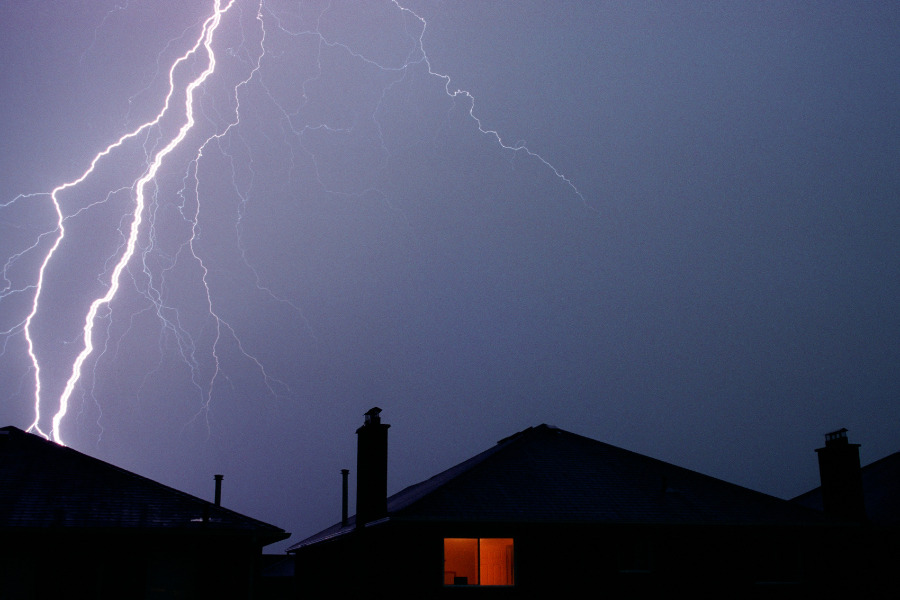The Unexpected Dangers of Common Home Features
Home is where the heart is, and it’s meant to be our safe haven. However, many common home features can present unexpected dangers that most people are unaware of. This article will explore some of these hidden threats lurking in our homes, discuss their potential consequences, and provide ways to minimize their risks.
Skylights
Skylights are an excellent, energy-saving way to allow more natural light into your home. However, you’ve likely heard that skylights have the potential to leak and cause water damage in your home. What you might not have heard, though, is that there are nearly 1000 deaths caused by skylights each year. This occurs when homeowners or hired workers fall through the skylight while making repairs on the roof of a home. If you don’t want to be defending yourself against skylight fall accident lawyers, it’s important to take preventative measures to avoid these accidents.
Prevention Tips
- Place handrails or other safeguards around skylights.
- Cover skylights with a dome or other safety materials.
- Hire professionals to do projects around skylights.
- Inform anyone working on your roof of the presence of skylights.
Staircases
Staircases are a crucial part of many homes, but they can also be a hazard, especially for children and the elderly. Slippery surfaces, inadequate lighting, and lack of handrails can all contribute to falls, which can lead to severe injuries such as fractures, head trauma, and spinal cord injuries.
Prevention Tips
- Install non-slip surfaces on stairs.
- Ensure proper lighting, including nightlights for nighttime use.
- Add handrails on both sides of the staircase.
- Regularly inspect stairs for wear and tear, and repair any damages.
- Consider installing gates at the top and bottom of the stairs to prevent children from accessing them unsupervised.
Electrical Outlets
Overloading electrical outlets with multiple devices can cause overheating, leading to fires. Additionally, uncovered outlets can pose a significant risk to curious children, who may insert objects into the sockets and suffer electrical burns or shocks.
Prevention Tips
- Avoid overloading outlets. Use power strips with surge protection if necessary.
- Unplug devices when not in use.
- Use outlet covers to protect children.
- Regularly inspect outlets and wiring for signs of wear or damage.
- Schedule professional electrical inspections periodically to ensure your home’s wiring is safe and up-to-date.
Windows
Windows are essential for ventilation and natural light, but they can also pose dangers, especially for children. Falls from windows can result in severe injuries or fatalities. Moreover, window cords can present a strangulation hazard for young children.
Prevention Tips
- Install window guards or stops to prevent children from falling.
- Keep furniture away from windows to prevent climbing access.
- Choose cordless window coverings of secure cords out of children’s reach.
- Lock windows when not in use to prevent unauthorized access.
- Consider installing window alarms to alert you if a window is opened unexpectedly.
Kitchen Appliances
Kitchen appliances, such as stoves and ovens, can cause burns and fires if not used properly. Leaving appliances unattended or placing flammable materials nearby can lead to disaster. Additionally, sharp utensils and heavy pots and pans can cause injuries if not stored securely.
Prevention Tips
- Never leave appliances unattended while in use.
- Keep flammable items away from heat sources.
- Teach children about kitchen safety and establish boundaries.
- Store sharp utensils and heavy cookware in secure locations.
- Install safety latches on cabinets and drawers to prevent children from accessing dangerous items.
Bathroom Hazards
Slippery surfaces and hot water in the bathroom can lead to accidents, including slips, falls, and scalds. Inadequate ventilation can also cause mold and mildew growth, which can trigger allergies and respiratory issues.
Prevention Tips
- Install non-slip mats in the shower and bathtub.
- Set the water heater temperature to 120 degrees Fahrenheit or lower to prevent scalding.
- Install grab bars in the shower and near the toilet for added support.
- Ensure proper ventilation by using exhaust fans and opening windows when possible.
- Regularly clean and inspect bathrooms for mold and mildew, and address any issues promptly.
Backyards and Outdoor Spaces
Outdoor spaces, like backyards and patios, offer a great environment for relaxation and play, but they can also present hazards. Pools, ponds, and other water features pose a drowning risk, while poorly maintained play equipment can lead to injuries.
Prevention Tips
- Install fencing and self-closing, self-latching gates around pools, and other water features.
- Ensure proper supervision when children are playing near water.
- Regularly inspect and maintain play equipment, such as swings and slides, to ensure they are safe.
- Keep outdoor spaces clear of debris and tripping hazards.
- Properly store garden tools and chemicals to prevent accidents.
Garage Safety
Garages often contain hazardous materials, such as gasoline, paint, and chemicals, that can pose a risk to health and safety. Additionally, cluttered garages can create tripping hazards and hinder safe vehicle access.
Prevention Tips
- Store hazardous materials in a locked cabinet or on high shelves, out of children’s reach.
- Keep the garage floor clear of clutter and debris.
- Install proper shelving and storage solutions to maintain organization.
- Regularly inspect and maintain garage doors and openers for safe operation.
- Consider installing a carbon monoxide detector in the garage to alert you to dangerous levels of this odorless, colorless gas.

